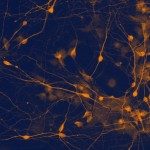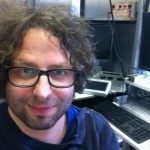Link to Pubmed [PMID] – 16403836
Am J Physiol Renal Physiol 2006 Jun; 290(6): F1421-9
Using the patch-clamp technique, we investigated Cl- channels on the basolateral membrane of the connecting tubule (CNT) and cortical collecting duct (CCD). We found a approximately 10-pS channel in CNT cell-attached patches. Substitution of sodium gluconate for NaCl in the pipette shifted the reversal potential by +25 mV, whereas N-methyl-D-gluconate chloride had no effect, indicating anion selectivity. On inside-out patches, we determined a selectivity sequence of Cl- > Br- approximately NO3(-) > F-, which is compatible with that of ClC-K2, a Cl- channel in the distal nephron. In addition, the number of open channels (NP(o)) measured in cell-attached patches was significantly increased when Ca2+ concentration or pH in the pipette was increased, which is another characteristic of ClC-K. These findings suggest that the basis for this channel is ClC-K2. A similar Cl- channel was found in CCD patches. Because CNT and CCD are heterogeneous tissues, we studied the cellular distribution of the Cl- channel using recording conditions (KCl-rich solution in the pipette) that allowed us to detect simultaneously Cl- channels and inwardly rectifying K+ channels. We detected Cl- channels alone in 45% and 42% and K+ channels alone in 51% and 58% of CNT and CCD patches, respectively. Cl- and K+ channels were recorded simultaneously from two patches (4% of patches) in the CNT and from none of the patches in the CCD. This indicates that Cl- and K+ channels are located in different cell types, which we suggest may be the intercalated cells and principal cells, respectively.

